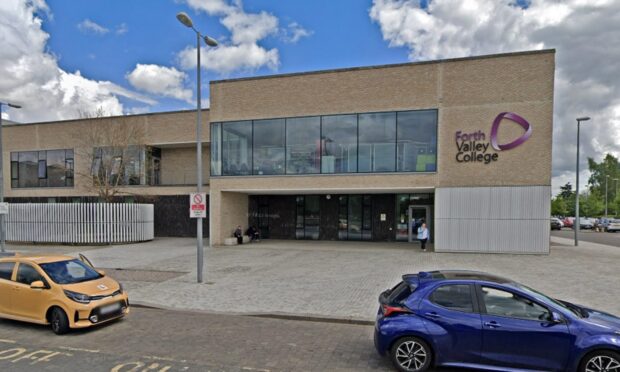Amid concerns about the impact of concussion on children, World Rugby has criticised claims in a study calling for tackling and scrums to be banned in school sport. Michael Alexander reports.
It’s a sunny Saturday morning and several dozen parents have gathered for the weekly ritual of watching their sons play rugby.
The air resounds with calls of “Tackle! Tackle!” as the opposition moves the ball out to the wing.
There’s a cry of “take him out” as a flanker launches himself at the winger’s legs, bringing him down.
Players pile in and suddenly the opposition’s scrum half emerges with the ball and threatens to score; but the full-back tackles him high on the body and saves the day.
It’s a pivotal moment of the match.
Until, that is, it’s noticed that the scrum half, who is still a child in the eyes of the law, stays down and play stops.
It’s not clear whether the boy is concussed, has torn a knee ligament or has sustained a neck injury.
Players look on anxiously as the referee takes out his mobile and dials 999. It seems an age before the ambulance arrives to take the child to his local A&E to be checked out.
Serious rugby injuries among children are “very very rare”, several parents involved in the game have assured The Courier.
Yet there has been much debate in recent years about the cumulative impact of concussion in the adult game.
A study published last year on the long-term effects of concussions in former Scotland rugby players found they displayed “only some mild memory effects”.
It came as the Howe of Fife Rugby Club in Cupar trialled what it believed was the first new method of diagnosing concussion in rugby players.
But now the UK’s chief medical officers (CMOs) are being urged to protect children from the risks of rugby injuries by removing contact from the school game completely.
Prof Allyson Pollock, from Newcastle University, is presenting new evidence that banning tackling would reduce concussion, head and neck injuries.
Last year, the CMOs rejected a call for a ban on tackling in youth rugby.
They said the benefits of learning, training and playing rugby outweighed the risks of injury.
Writing in an opinion piece for the British Medical Journal, Prof Pollock and Graham Kirkwood, also from Newcastle University, said that governments had “a duty to protect children from risks of injury and to ensure safety of children” under a United Nations Convention on the Rights of the Child (Article 19).
They referred to a study they published in July in the British Journal of Sports Medicine in which they re-examined the rates and risks of injuries in sport.
Their analysis found that rugby had the highest concussion rates in children – 4.18 concussions per 1,000 athlete exposures – compared to 1.2 for ice hockey and 0.53 for American football.
And they cited evidence from Canada that changing the rules could make a difference. When there was a ban on body-checking opposing players in under-13 ice hockey, a review found a 67% reduction in concussion risk.
Prof Pollock said children who wanted to could still play contact rugby outside school, for clubs, but schools should not be able to enforce contact rugby.
She said: “We call on the chief medical officers to act on the evidence and advise the UK government to put the interests of the child before those of corporate professional rugby unions and remove harmful contact from the school game.”
The authors reported research that girls were found to be three or four times more likely than boys to be affected by symptoms of concussion for 28 days, and they also highlighted the links between head injuries and an increased risk of dementia and Alzheimer’s disease.
Yesterday, however, as the sport’s governing body World Rugby shot down the academics’ findings,Scottish Rugby told The Courier it has playing practices in place to safeguard youngsters as they enter the game with contact not included until later in age to allow for suitable physical development.
All clubs and schools must report injuries to Scottish Rugby – but only if medical assistance was required at either a hospital or through a doctor’s appointment after the game. Meanwhile, injury statistics are not currently available but are being compiled as part of an on-going study.
“Scottish Rugby is committed to player welfare at every level of the game,” a spokesman said.
“Our ‘RugbyRight’ training programme is mandatory for all coaches, teachers and referees who are required each season to complete the course to ensure players can enjoy the game in a safe and informed environment.
“Course modules include player welfare, safe coaching and safe contact techniques and are completed by over 4,500 coaches annually.
“Rugby for young people at schools and clubs exists in different forms, both non-contact and contact depending on age, and significant work has been undertaken to develop a structured progression to cover the introduction, playing, teaching and refereeing of the game from child to adult level to maximise player safety.
“Every sport carries a degree of physical risk, but we believe the health and social benefits to young people in being active and enjoying sport are far greater.”
Fife man Struan Nimmo, 44, has been playing rugby most of his life and his children Duncan, Scott and Zoe all play in their various age grades for Howe of Fife Rugby Club in Cupar.
He said rugby injuries amongst children were “very very rare”, adding: “Rugby is great. Hard, but fantastic.”
Dr Catherine Calderwood Chief Medical Officer for Scotland said: “The Scottish Government remains committed to creating more opportunities for people to get involved in sport while avoiding exposure to disproportionate risk.
“It is critical that everyone involved in rugby and other sports understands how to respond to suspected concussion and reduce risk, particularly for children and young adults.
“That is why we have produced clear guidelines for understanding and managing concussion in sport in Scotland and I would urge all parents, coaches and those involved with the delivery of sporting activities to familiarise themselves with these.”
Last night the sport’s governing body World Rugby disputed calls for a tackling ban in schools.
It said in a statement:“World Rugby and its member unions take player safety very seriously and proactively pursue an evidence-based approach to reduce the risk of injury at all levels.
“These claims are not based on like-for-like injury statistics and the conclusions are not supported by the available data.
“It is well documented that, for most sports, injury rates increase with age, but the quoted research mixes 9-12 with 18-20 age groups.
“Indeed, within the published studies where injury has been properly defined and monitored, suggest the risk for pre-teens is not unacceptably high compared to other popular sports.”
Professor David Lavalle of Abertay University, the world’s first Professor of Duty of Care in Sport, said: “The recently published Duty of Care in Sport Review by the UK government has made a series of recommendations related to how sports such as rugby can ensure the safety and well-being of those who are participating.
“Research here at Abertay University in collaboration with the Scottish Rugby Union is looking at reducing injury risk during tackling, but more is needed.
“Such research can provide useful evidence for stakeholders, including parents, who can ensure young athletes have a safe and positive journey through sport.”


















